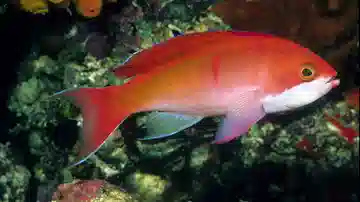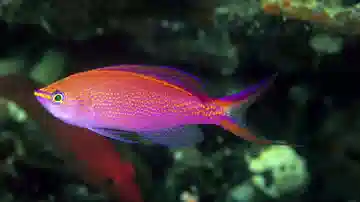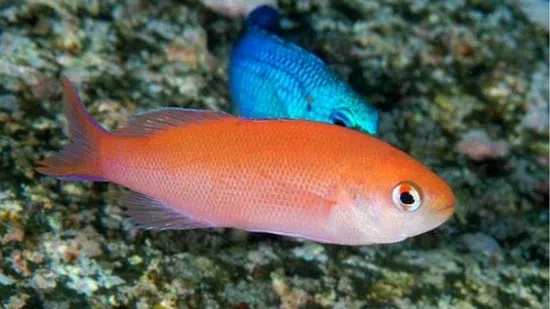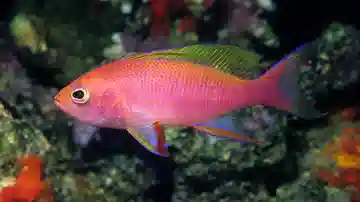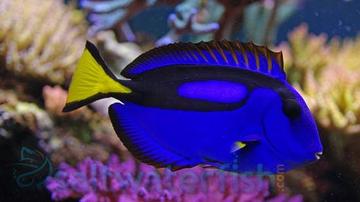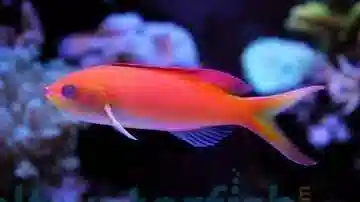Dispar Anthias
Nemanthias dispar
(0 Reviews)
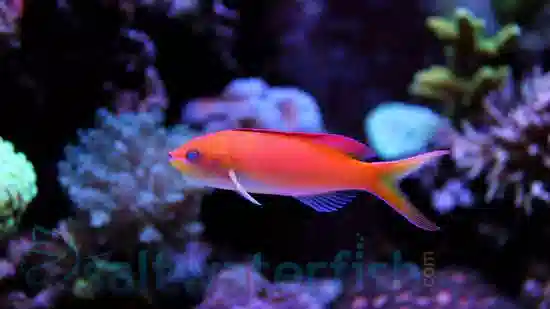
Dispar Anthias
Nemanthias dispar
(0 Reviews)
{{ item.name }}
Size: {{ item.extra_field_3 }}
${{ getFormattedPrice(item.saleprice) }} ${{ getFormattedPrice(item.price) }}
To join the waiting list, click here
Free Shipping
With
$199.00
or more in Marine Life.
More details...
Dispar Anthias Care Facts
| Care Level: | Moderate |
|---|---|
| Temperament: | Peaceful |
| Diet: | Carnovore |
| Origin: | Indo Pacific |
| Acclimation Time: | 3+ Hours |
| Reef Safe: | Yes |
| Coral Safe: | Yes |
| Invertebrate Safe: | Yes |
| Minimum Tank Size: | 50+ Gallons |
The Dispar Anthias (Pseudanthias dispar): A Vibrant Beauty for Saltwater Aquariums
The Dispar Anthias (Pseudanthias dispar) is an appealing and vibrant species that adds color and energy to saltwater aquariums. Known for its stunning appearance and lively behavior, this anthias is a sought-after choice among marine enthusiasts. Let's explore the Dispar Anthias' habitat, reef-safe nature, size, lifespan, diet, compatibility, suitable tank mates, sexual dimorphism, tank requirements, other common names, and compatible tank mates.
Habitat and Range of Dispar Anthias
The Dispar Anthias is native to the warm waters of the Indo-Pacific region, ranging from the Red Sea to the western Pacific Ocean. In the wild, they are commonly found in coral-rich lagoons and reef areas, forming large schools and seeking shelter among corals and rock formations.
Reef-Safe Beauty of Dispar Anthias
The Dispar Anthias is reef-safe and poses no threat to corals or other invertebrates. They enhance the beauty of reef aquariums with their vibrant colors and active swimming behavior.
Size and Lifespan for the Dispar Anthias
Dispar Anthias can grow to about 3 or 4 inches (7.5 to 10 cm) in length. With proper care, they can have a lifespan of up to five years in a well-maintained aquarium.
Diet and Feeding Habits of the Dispar Anthias
Dispar Anthias are omnivores in their natural habitat, feeding on zooplankton and small crustaceans. In a home aquarium, they readily accept a diet of high-quality frozen or live foods such as brine shrimp, mysis shrimp, and marine pellets.
Peaceful Compatibility of the Dispar Anthias
Dispar Anthias are generally peaceful but can be aggressive towards other anthias species, especially when kept in small groups. They are best kept in larger aquariums with plenty of hiding spots and open swimming areas.
Suitable Tank Mates for the Dispar Anthias
Peaceful and colorful, cardinalfish make suitable tank mates for the Dispar Anthias.
These small and peaceful fish share a compatible tank environment with the anthias.
Peaceful gobies can coexist harmoniously with the Dispar Anthias, adding diversity to the tank.
Some species of blennies are suitable tank mates that add character and charm to the aquarium.
Peaceful jawfish species can be compatible tank mates for the Dispar Anthias.
Sexual Dimorphism of the Dispar Anthias
Male and female Dispar Anthias exhibit sexual dimorphism, where males display more intense and vibrant coloration, especially during courtship displays. Females are generally smaller and have more subdued coloration.
Tank Requirements for the Dispar Anthias
To provide a suitable environment for the Dispar Anthias, the aquarium should have plenty of live rock for hiding and swimming and open areas for schooling. Stable water parameters and high water quality are essential for their well-being.
Other Common Names Known for the Dispar Anthias
Besides the name "Dispar Anthias," this species is also known as the "Lyretail Anthias" or "Pseudanthias Lyretail."
In conclusion, the Dispar Anthias (Pseudanthias dispar) is a vibrant and captivating addition to saltwater aquariums. Its stunning appearance and lively behavior make it popular among marine enthusiasts. Aquarists can enjoy the beauty and energy of these mesmerizing anthias by providing them with a suitable environment, compatible tank mates, and proper care.
It took a week and a half, but this little guy is finally becoming comfortable in the tank and has now bonded with the other, larger, Dispar Anthias. My experience is that these fish are a little more on the shy side than most in my tank, but not reclusive. They are a beautiful addition and get along well with everyone.
Reviewed by: Monte Puymon on Aug. 27, 2024
Nice fish. Gets along great with the rest too
Reviewed by: Alvin Barbes on June 17, 2024
Beautiful fish hid for days when it first came in now it's out most of the time
Reviewed by: Katrina Bowman on April 29, 2024
Reviewed by: Joseph Fortini on April 18, 2024
Big and active
Reviewed by: Keith Blair on April 10, 2024
Reviewed by: Adam Hacker on Jan. 10, 2024
Reviewed by: Tracy Hedine on Jan. 2, 2024


